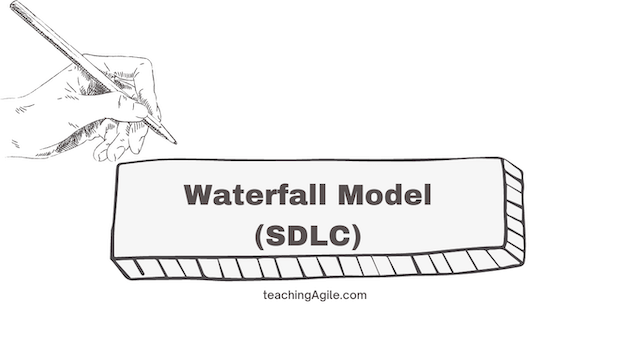
SDLC Waterfall Model: A Comprehensive Guide
Software Development Life Cycle (SDLC) is an integral part of the software development process, and the Waterfall model is a popular methodology that has been around for a while. This article will delve into the Waterfall model, discussing its advantages, disadvantages, and the triple constraint that impacts its implementation. With personal examples and experiences, this comprehensive guide will give you a clear understanding of the Waterfall model in the SDLC.
 SDLC Waterfall Model: A
Comprehensive Guide
SDLC Waterfall Model: A
Comprehensive Guide
Table of Contents
- Introduction to the Waterfall Model
- Phases of the Waterfall Model
- Advantages of the Waterfall Model
- Disadvantages of the Waterfall Model
- The Triple Constraint in the Waterfall Model
- Conclusion
- Video
- Presentation used in the video
- Frequently asked questions
Introduction to the Waterfall Model
The Waterfall model is a very linear and sequential approach to software development, where each phase of the development process is completed before moving on to the next one. Executing each step of the SDLC in a sequence means you cannot return to a previous stage without restarting the entire project from the start line. The Waterfall model is very well suited for projects with well-defined requirements and minimal changes expected during development.
Phases of the Waterfall Model
The Waterfall model consists of the following phases:
- Requirements: This requirement analysis phase involves gathering and documenting the project requirements, ensuring all stakeholders understand the project's scope and objectives.
- Design: During the design phase, the software architecture and system design are created, laying the foundation for software development.
- Development: During the development phase, the software is developed, and the code is written.
- Testing: The software is thoroughly tested to identify and rectify any errors in the testing phase, ensuring it meets the requirements set out in the first phase.
- Deployment: The software is deployed and made available to the end users.
- Maintenance: After the software is deployed, it must be maintained to fix any issues and provide updates.
Advantages of the Waterfall Model
Some of the benefits of the Waterfall model include:
- Simplicity: The Waterfall model is easy to understand and follow, making it suitable for small projects with well-defined requirements. The Waterfall model is very easy to understand and implement, making it ideal for smaller projects with precise requirements. The linear process flow and well-defined stages make it easy for team members to follow the project's progress.
- Documentation: The Waterfall model places a strong emphasis on documentation. Documentation ensures that every step of the process is recorded, which can be helpful for future reference, troubleshooting, and understanding how and why someone made any particulate decisions throughout the project.
- Manageability: Due to its sequential nature, the Waterfall model allows for easier project management. Each phase has specific deliverables and deadlines, making monitoring progress and allocating resources efficiently simple.
- Discipline through strict phase progression: As you saw in the waterfall model there is strict discipline because the output of 1 phase acts as an input to the next phase. Therefore, for the model to work, it must be very disciplined.
- Perfect for Small Projects: The waterfall model works perfectly well for small projects with very well-known requirements.
Disadvantages of the Waterfall Model
The Waterfall model has some limitations, such as:
- Inflexibility: The Waterfall model is relatively inflexible. Once a project moves to the next phase, it takes time to go back and make changes. This can be problematic if new requirements or issues arise, as the model only allows modifications.
- Late Feedback: In the Waterfall model, testing occurs late in the process. This can lead to the discovery of significant issues or bugs when addressing them may be expensive or time-consuming. Late testing also makes it challenging to ensure the quality of the final product.
- Poor Adaptability: The Waterfall model needs to be better suited for projects with changing requirements or requiring frequent feedback from the client or end-users.
- Not Suitable for Complex Projects: The Waterfall model must be better suited for complex or large projects with evolving requirements. Its linear approach can make it challenging to adapt to changing circumstances, and the rigid structure may hinder innovation and collaboration.
| Advantages | Disadvantages |
|---|---|
| 1. Clearly defined stages and deliverables | 1. Inflexible and hard to accommodate changes |
| 2. Simple to understand and implement | 2. Late discovery of issues due to delayed testing |
| 3. Strong emphasis on documentation | 3. Not suitable for complex or large projects |
| 4. Easier project management | 4. Assumes requirements are fixed and well-defined |
| 5. Works well for smaller projects with precise requirements | 5. Minimal customer interaction until the end of the project |
| 6. Facilitates resource allocation | 6. Difficult to estimate time and costs |
| 7. Sequential structure helps identify dependencies | 7. Requires extensive upfront planning |
| 8. Encourages thorough requirement analysis | 8. Not ideal for projects with evolving requirements |
| 9. Testing starts only when the complete product is developed with precise requirements | 9. Testing occurs late in the process, leading to late feedback |
Table: Advantages and Disadvantages of The Waterfall Model in the Software Development Life Cycle (SDLC)
The Triple Constraint in the Waterfall Model
The triple constraint is a project management concept that focuses on three key factors: scope, time, and cost. Balancing these factors is crucial for a project's success and plays a significant role in the Waterfall model. Here's how the triple constraint impacts the Waterfall model:
- Scope: The project's scope must be clearly defined and documented during the requirements phase. If the scope changes during the project, it can lead to significant delays and increased costs, as the Waterfall model needs to be designed to accommodate changes easily.
- Time: The linear nature of the Waterfall model means that each phase must be completed within the allotted time. Delays in one phase can impact the entire project timeline, leading to extended project duration and increased costs.
- Cost: The inflexibility of the Waterfall model can lead to increased costs if changes are required during the project. Also, late identification of issues during testing can result in costly fixes.
Conclusion
The Waterfall model, while simple and easy to understand, has its limitations, particularly when handling changes and adapting to evolving project requirements. However, the Waterfall model can be an effective SDLC methodology for projects with well-defined conditions and minimal modifications expected. Understanding the triple constraint's advantages, disadvantages, and impact on the Waterfall model can help you make informed decisions when selecting the right SDLC methodology for your projects.
Video
This video is part of our scrum course. Please sign-up for the course to see the video.
Presentation used in the video
Frequently Asked Questions (FAQs) / People Also Ask (PAA)
When to use SDLC Waterfall model?